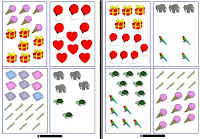Before the commencement of this module, I asked myself “Why elementary mathematics? Aren’t we in early childhood?” However, this module has brought me back to my early school years which I missed most. How a teacher assists a child in the learning is definitely an impact to a child who is struggling to learn a concept. I really learned and benefited a lot from Dr Yeap through this module. I have changed my perspectives in teaching children Mathematics and it was demonstrated in class on how can we engaged a learning child with fun activities.
Through the whole module, I understand the importance of hands-on and concrete experiences when learning mathematics. I personally enjoyed the whole module with the all the games and activities conducted. I am so excited by the cube sudoku which I am so impressed that I could solve it within minutes! I am so thrilled and amazed to learn that all these simple activities motivated me to learn. The rewards of cookies and quizzes posted by Dr Yeap really sparked off my learning desire once more. This is something that I took home with and it definitely encourages any child to learn as well.
 |
The completed cube sudoku activity |
I have not created any blog before this module and it is not too difficult after all. With this e-learning mode, I am able to expand my understanding by reading more related write-up and push myself to find out more websites related to the topics too. After the exploration in the internet, I realized there are a lot of good activities suitable for children to use as a tool to assist their learning. I will continue to explore and work on this e-learning style and to encourage more pre-school teachers to use them too.
Some links to share:
· Other type of 3D sudoku game
· How To Teach Kids To Solve Sudoku



















